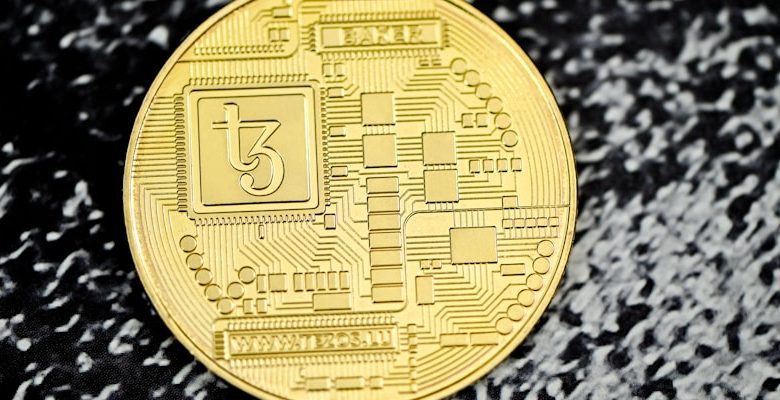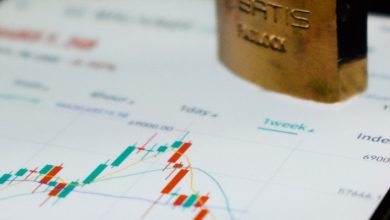The Graph (GRT): Indexing Blockchain Data for Developers

- Understanding The Graph (GRT) and its importance in blockchain development
- How The Graph (GRT) revolutionizes data indexing for blockchain applications
- The role of The Graph (GRT) in providing efficient data querying for developers
- Exploring the features and capabilities of The Graph (GRT) for blockchain projects
- Benefits of using The Graph (GRT) for indexing blockchain data in developer workflows
- Future trends and developments in The Graph (GRT) for enhancing blockchain development
Understanding The Graph (GRT) and its importance in blockchain development
The Graph (GRT) is a crucial component in the world of blockchain development. It serves as a tool for developers to efficiently index blockchain data, making it easier to access and query information stored on various blockchains. Understanding how The Graph works is essential for developers looking to build decentralized applications or dApps that require real-time data retrieval and analysis.
By utilizing The Graph, developers can create subgraphs that specify the data they want to retrieve from specific blockchains. These subgraphs can then be used to query the blockchain for information quickly and accurately. This process is essential for optimizing the performance of decentralized applications and ensuring that they can operate efficiently in a decentralized environment.
Without The Graph, developers would have to manually search through blockchain data, which can be time-consuming and inefficient. The Graph streamlines this process, allowing developers to focus on building innovative dApps without getting bogged down in the complexities of blockchain data retrieval.
Overall, understanding The Graph and its importance in blockchain development is crucial for developers looking to harness the power of blockchain technology. By leveraging The Graph, developers can access and query blockchain data more effectively, leading to the creation of more robust and efficient decentralized applications that can revolutionize various industries.
How The Graph (GRT) revolutionizes data indexing for blockchain applications
The Graph (GRT) is revolutionizing data indexing for blockchain applications by providing developers with a decentralized protocol for querying and indexing data from various blockchains efficiently. This innovative solution allows developers to access data quickly and easily, enabling them to build powerful decentralized applications without having to manage complex infrastructure.
By utilizing subgraphs, which are open APIs built by developers to query specific data on the blockchain, The Graph (GRT) provides a decentralized network of indexers and curators who are incentivized to ensure that data is accurate and up-to-date. This eliminates the need for developers to rely on centralized servers or third-party services, ensuring the security and reliability of the data they are accessing.
With The Graph (GRT), developers can easily search and retrieve data from blockchains like Ethereum, IPFS, and PoA, making it easier to build decentralized applications that rely on accurate and timely information. This not only streamlines the development process but also enhances the scalability and interoperability of blockchain applications, ultimately leading to a more robust and efficient decentralized ecosystem.
The role of The Graph (GRT) in providing efficient data querying for developers
The Graph (GRT) plays a crucial role in providing efficient data querying for developers working with blockchain technology. By indexing blockchain data, The Graph enables developers to easily access and retrieve specific information from various blockchains. This capability streamlines the development process by allowing developers to quickly query data without having to navigate through the entire blockchain manually.
Exploring the features and capabilities of The Graph (GRT) for blockchain projects
The Graph (GRT) is a powerful indexing protocol that allows blockchain developers to efficiently query and retrieve data from various blockchains. By using GRT, developers can easily access and analyze on-chain data without having to run their own nodes or create custom indexing solutions.
One of the key features of The Graph is its subgraph technology, which allows developers to define the data they want to index using a simple GraphQL schema. This makes it easy to create custom data indexes that can be shared and reused across different projects. Additionally, The Graph supports indexing data from multiple blockchains, making it a versatile tool for developers working on cross-chain applications.
With The Graph, developers can build decentralized applications (dApps) that require real-time access to on-chain data, such as decentralized exchanges, prediction markets, and NFT marketplaces. By leveraging The Graph’s indexing capabilities, developers can create more efficient and scalable dApps that provide a better user experience.
Benefits of using The Graph (GRT) for indexing blockchain data in developer workflows
Using The Graph (GRT) for indexing blockchain data in developer workflows offers a multitude of benefits. One of the key advantages is the ability to efficiently query and retrieve data from various blockchains, saving developers time and resources. By utilizing The Graph’s indexing protocols, developers can access specific information quickly and accurately, enhancing the overall efficiency of their projects.
Another benefit of incorporating The Graph into developer workflows is the improved scalability it provides. With The Graph’s decentralized network of indexers, developers can easily scale their applications as needed without compromising on performance. This scalability ensures that developers can handle increasing amounts of data without experiencing bottlenecks or slowdowns in their applications.
Furthermore, The Graph’s indexing services enable developers to create more robust and reliable applications by ensuring that the data they rely on is accurate and up-to-date. By utilizing The Graph’s indexing capabilities, developers can trust that the information they are accessing is valid and secure, leading to more reliable and trustworthy applications overall.
Future trends and developments in The Graph (GRT) for enhancing blockchain development
The future of The Graph (GRT) holds promising trends and developments that are set to revolutionize blockchain development. As the demand for decentralized applications continues to grow, The Graph is expected to play a crucial role in enhancing the efficiency and scalability of blockchain networks. One of the key trends that we can expect to see in the future is the integration of more blockchain networks with The Graph, allowing developers to access a wider range of data sources and improve the overall user experience.
Another important development that is anticipated in the future is the introduction of new features and functionalities that will further streamline the process of indexing blockchain data. This will make it easier for developers to build and deploy decentralized applications, ultimately driving greater adoption of blockchain technology. Additionally, advancements in data querying and indexing algorithms will enable developers to access real-time data more efficiently, leading to improved performance and user satisfaction.
Furthermore, as The Graph ecosystem continues to expand, we can expect to see a growing community of developers who are actively contributing to the development and improvement of the protocol. This collaborative approach will foster innovation and creativity, leading to the creation of more sophisticated and powerful decentralized applications. Ultimately, The Graph is poised to become a cornerstone of blockchain development, providing developers with the tools and resources they need to build the next generation of decentralized applications.



